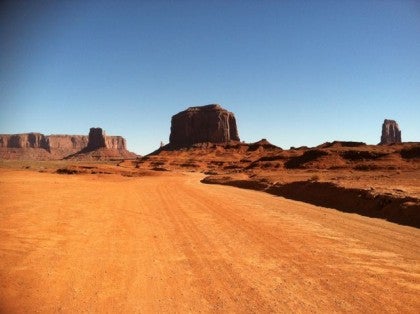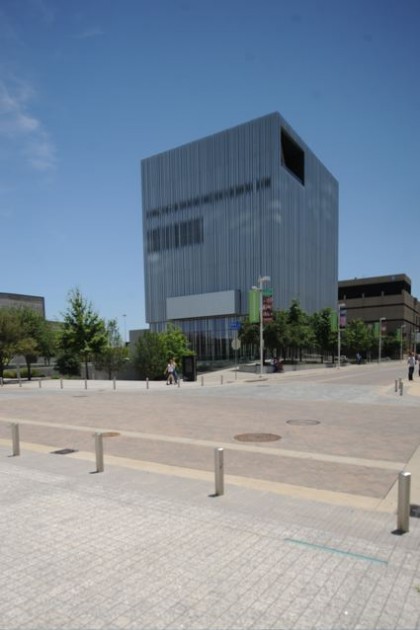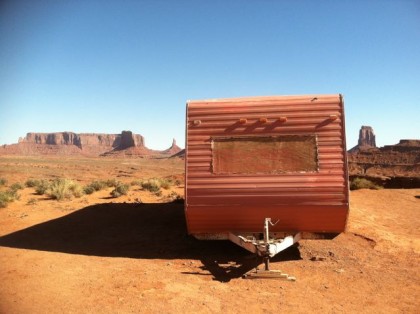
While in Dallas last week, I took a few minutes to walk from my office to the new Arts District where there are buildings by five Pritzker-Prize-winning architects within sight of each other—Nasher Sculpture Center by Renzo Piano, Meyerson Symphony Center by I.M. Pei, Norman Foster’s Winspear Opera House, Wyly Theater by Rem Koolhaas and, nearby, Thom Mayne’s Museum of Nature and Science. All of these buildings are monuments of late 20th century/early 21st century architecture.
Collectively, these buildings make a terrible urban environment. What should be a thriving, enlivening experience is, in fact, really dull. Have the star architects of our era forgotten how to make a city?
Put one egocentric jewel in a city, and maybe it’s OK. Put a bunch together, and you’ve got a no-man’s land. The self-absorbed, “look at me” quality in some of these jewels denies them a role in creating a larger city fabric. The internally focused nature of others leads them to turn blank, deadening walls to the surrounding streets and public spaces.

This is not what the civic leaders who led the creation of this district imagined. They struggled to get their architects to work together and make a meaningful collective environment. In its absence, the operators of the district have taken guerilla action. They have encouraged food trucks to move in and “occupy” Monument Valley. Trucks have clustered on the corner of a vacant lot, and they’ve put out cheap, spray-painted picnic tables. People are coming out of the downtown office buildings at lunch and are creating a little community. What a contrast—big dour architectural monuments versus rich, lively urban life! Some of the food trucks have moved under the canopy of the Winspear Opera House and have begun to humanize its vast, daunting scale.

Dallas has made great leaps in regenerating its downtown and is currently building a new connector, the Klyde Warren Park, on top of the Woodall Rodgers Freeway as a way to knit downtown and uptown together. It is right next door to the arts district, and it will be interesting to see if this intervention by a landscape architect will be able to counteract the gulf that has been created by the architects of Monument Valley.
Is it a coincidence that when Pritzker-Prize-winning architects make buildings in a concentrated area, there is no life and no urban vitality? In defining good design to mean splashy visual objects, have we forgotten that great architecture is also about making potent cities and being a crucible for a rich and engaging life?
What do you think?

Like you, Larry, I am based in Austin, and so I look at Dallas as something of an outsider, even though I have been there twice a month or more on photography and other business for two decades. Your analogy to Monument Valley is apt. The other way the dotted built fabric strikes me, is as baubles laced across a parched, unkempt body. That is, there are some of the most remarkable structures to be found in Dallas amid some of the most neglected city streetscapes. I am particularly sad to see some of the quietly dignified modernist buildings downtown in slow, echoing decay, abandoned behind chain-link security fence. Dallas, by history and nature, is the most acquisitive of Texas’ cities. The question is how to turn this competitive shopaholic into more of a methodical curator. It is one thing to make pretty things on the landscape, quite another to make them livable and vibrant. The new park over Woodall Rogers is both an engineering and landscape marvel. Now to harness that same energy and think smaller, more strategically to invest in some low-level cohesion throughout the core. Think clean appealing streetscapes, from corner to corner, not just where Pritzker winners have parachuted in with a new jewel.
So then what could Dallas/the architects have incorporated from examples of successful urban development? What are they missing?
So I did this same walking tour 3 weeks ago and in general had your same conclusions.
I just feel the need to say that the Winspear is a big, bulky lady, but she is the only one who offered me shade, unobstructed breeze, and a comfortable place to sit and watch the city around me. I started my tour coming up from the parking garage at the Winspear and no doubt my reaction to the building was influenced by my coming up under its canopy rather than walking up to it. Aside from having a great time playing around the Neto Exhibit at the Nasher, once I left the Winspear I was looking forward to going back to it.
It’s exterior is daunting when you walk up to it, and it’s not exactly graceful. Maybe its outdoor space is too loosely programed to sustain meaningful activity on its own. Those things being said though, just it’s provision for my needs as a Texan in the summer means that it has the ability to be an oasis in what is otherwise a hard, hot, humid environment — and to endear itself to me regardless of what it looks like. The Winspear isn’t as great as it could be, but its the only building one on that tour that makes room for everyday life as well as the art form it was originally intended to serve.
Perhaps an unflattering reflection of our ‘look at me’ culture. It may be that the giving of awards is part of the problem: superstars get recognition, and so they must stand out from the rest…NOT work with them to achieve a public (or just a pleasant) purpose .
Once more, architecture reveals the pains and prizes of Us As A People. In Dallas, as in countless other places, the intention was to showcase someone’s brilliance, and that was achieved. Getting what we ask for is sometimes embarrassing.